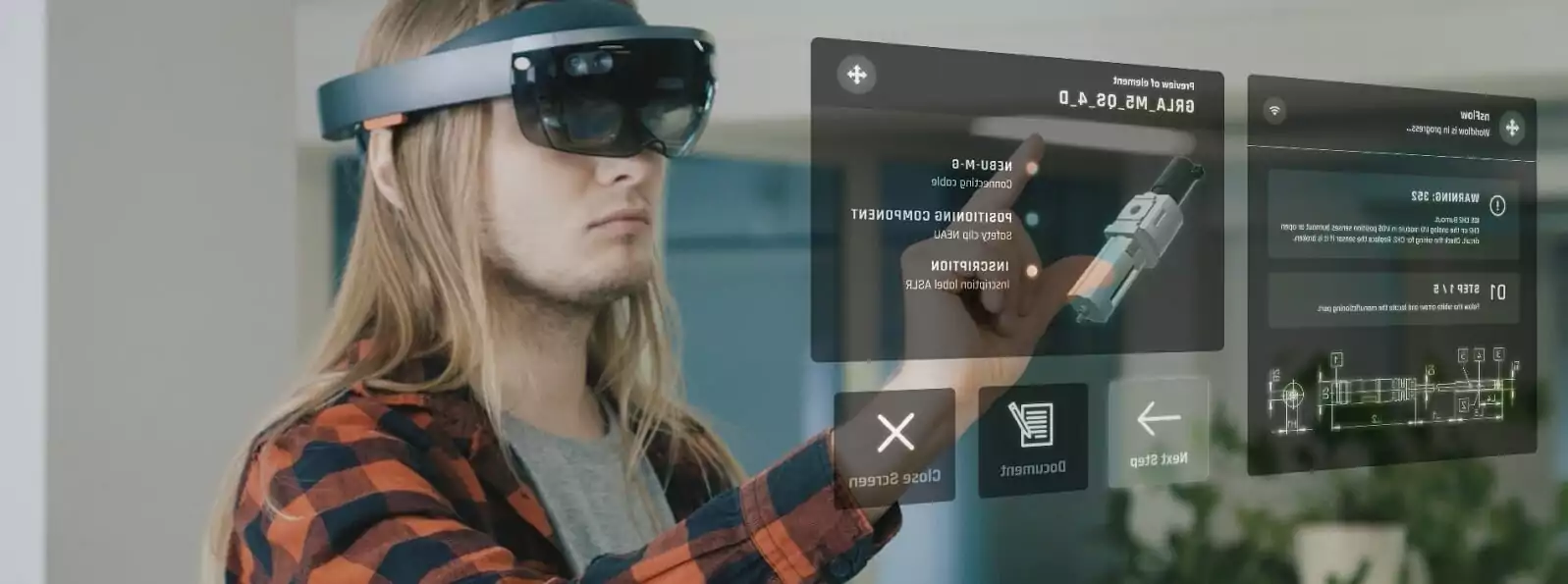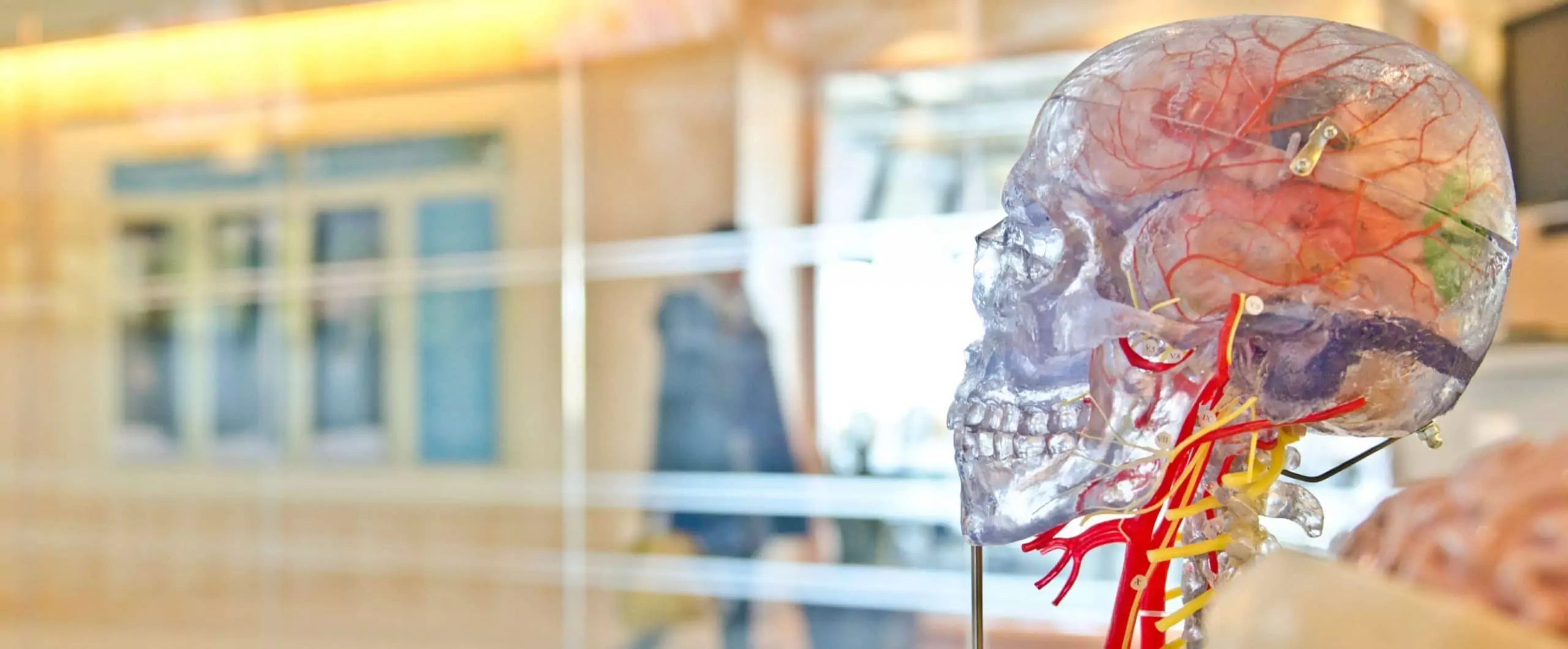The future is here.
The concept of intelligent machines has accompanied engineers since the beginning of the 20th century. What seemed once a pipe dream, finally becomes an integral part of everyday tasks.
At last, humans constructed machines capable of learning and solving problems, fueling processes of the 4th industrial revolution.
Utilizing modern solutions, including, but not limited to, industrial internet of things, cloud computing, artificial intelligence, and machine learning, companies arm their manufacturing plants for the ultimate race, remaining relevant and efficient in the reality of Industry 4.0.
Artificial intelligence
Artificial intelligence, in short terms, is the technology that powers machines to perform human-like operations. Particularly machine learning, a subset of artificial intelligence, lets machines mimic human behavior. The more complex the task, the better – as the Moravec’s paradox observes, what is simple and intuitive for humans, is the most challenging to teach to machines. The skills we learn in our first months and years of life are the hardest to be taught to robots. Conversely, what we find difficult to comprehend, perform, and optimize, are tasks that robots can take off our shoulders.

Global companies utilize AI/ML in their manufacturing plants to automate, streamline processes, and achieve unprecedented results in their fields. Examples include enterprises with large factories, carrying out diverse processes, requiring tailor-made solutions, often developed by in-house research & development departments.
6 remarkable applications of AI/ML in manufacturing
Automation and robotics
Artificial intelligence powers automation solutions in various industry branches, changing the face of mass production. Robots take on mundane, repetitive work, relieving staff from many tasks. As a 2020 report states, in 2019 there were already 2,7 million robots working in manufacturing plants worldwide. In times of the 4th industrial revolution, factories modernize their plants to remain relevant in their fields and keep pace with the ever-changing market. Standing by the assembly lines, handling raw materials, welding, machining, packaging and performing other tasks, robots keep on powering global industries. Improving operations quality, reducing downtime risk, working 24/7, also in hazardous environments and difficult conditions, AI-powered robots provide new opportunities for scalable work.
As market forecasts show, the demand for automation and robotics in manufacturing is still in high demand, both for the more traditional robots performing simple, repetitive tasks, and the most advanced collaborative robots, designed to safely collaborate with a human workforce.
We’re already seeing six-axis robotic arm solutions arriving to shake things up in this arena. From pick-and-place duties to painting, cutting edge hardware and software setups are proving that there’s much more to modern automation than repetition. It’s about empowering organizations and employees with robotics which can evolve over time, integrate with a wider ecosystem, and act with increasing autonomy without making compromises.
Maximizing efficiency with predictive analytics
Bosch, the international engineering and technology company, aims to make its production site green by 2023 utilizing artificial intelligence and machine learning [1]. The German-based enterprise leans towards renewable energy and uses a software solution combining data on power generation and consumption. The solution uses AI/ML algorithms to forecast generating output and power requirements, creating operating schedules for power consumption. Bosch converges to renewable sources of energy and purchasing green power, but the plan wouldn’t be possible without achieving overall sustainability, met thanks to AI/ML solutions.

Predictive maintenance
Prevention is better than cure. The approach attributed to the Dutch philosopher Erasmus is manifested in technology aimed at detecting possible errors, defects in machinery or any other anomalies in processes, using data analysis. Predictive maintenance has huge significance in high-risk, hazardous industries, like mining, oil, and gas industries. Every once in a while a large-scale oil rig accident happens, its consequences are massive and affect the industry, society, and environment. Avoiding such events through employing digital solutions is nowadays a norm, not an exception. With the use of the Industrial Internet of Things (IIoT), companies like BP, Shell, ExxonMobil reduce malfunctioning risks and operational costs [2].
Detection of atypical machinery behavior covers various techniques, including infrared, vibration, and sonic analysis. IIoT devices gather information on temperature, possible misalignment of parts, or deficiency in machine lubrication, which can indicate failures in the near future. Industrial processes under the watchful eye of algorithms benefit from improved safety, productivity, energy efficiency, and overall longer machinery lifespan.
Quality assurance processes
The Bavaria-derived car manufacturing giant, BMW, incorporates AI in its production lines to improve efficiency and quality assurance. During 30 hours, the time an average car is assembled in the plant, the company gathers large data sets, which contribute to improving internal processes. Recently, BMW has begun to laser mark all metal sheets. Thanks to engraved codes, algorithms aggregate data on necessary parameters, leading to easier tracking of the manufacturing process and decreasing the number of necessary inspections. The robots working along production lines carry wear sensors, which signal the right moment for electrodes replacements, relieving staff from manually controlling the condition of electrodes. In other corners of the plant, sensors and algorithms check for acceptable levels of dusting in the paint shop, ensure the correctness of mounted elements and test the right calibration of car keys, the last example being a “home-grown” robot, Comfort Access [3].
Generative Adversarial Networks (GANs)
The other automotive giant, known for a range of American car brands, utilizes a different approach to AI in their factories. GANs are neural networks, a class of machine learning algorithms, capable of creating images based on given sets of pictures. GM is using GANs in generative design, on the border of artificial intelligence and additive manufacturing in the name of improved personalization, performance and customization. Software used by GM analyzes the design permutations, recommending the best solutions with regard to the needs and parameters (like materials, budget, etc.) of created components. Coupled with 3D printing, GANs create new opportunities in the industry previously depending on traditional methods, like injection molds. Shapes and combinations impossible to manufacture before now can revolutionize the automotive field in times of a growing demand for customization and creating individual products [4].
The need for personalized cars itself probably wouldn’t be enough to convince the decision-makers to utilize machine learning solutions. There is a greater need behind this strategy, as GANs and additive manufacturing have bets placed on them to become game-changers in building electric vehicles. Again, it’s not a fantasy but a solution to business needs, leading to improvements in e.g. mass optimization. As many drivers say, “mass is the foe of acceleration”. GM is searching for further fields of GANs application, and improving gas mileage is one of the priorities of the automotive giant.
Digital twin
A virtual depiction of physical objects, originating from NASA’s idea of improving physical models simulations, is utilized in a couple of ways in manufacturing processes. Modeling machines, their environment and data on real-time events improves sustainability, enables better operational decisions, and more advanced maintenance. The technology is among the most dynamically developing, with industries aiming to improve their processes through AI-powered monitoring, forecasting and diagnostics. From CNC machines to civil engineering to aviation, AI-powered modeling solutions let engineers assess broader insights on machinery lifecycles, tackling both the everyday and rarely occurring issues.
Among remarkable examples in manufacturing, General Electric uses digital twins to take their jet engineering projects to levels unavailable before using traditional tools. The engineering giant develops more efficient engines, compliant with modern requirements. Digital twins combine data on e.g. materials’ resilience to extreme temperatures based on information from approximately 100 sensors, leading to highly efficient, powerful designs [5].
Powered by AI algorithms, digital twins combine operational, design, sensor data to build advanced virtual models of machinery. With an ongoing influx of data, digital representation of physical objects becomes more accurate, serving industrial processes. Augmented reality solutions, like the nsFlow platform, facilitate work with digital twins, providing nearly instant access to specialist knowledge, shortening downtimes. Digital twins run real-time operations, instantly calculating data from various sources to create advanced models. With the use of DT, companies can detect abnormalities and forecast maintenance issues, preventing possible downtimes. Once an error is detected in the machine’s functioning, technicians on-site can use solutions incorporating augmented reality to resolve the problem with help from remote experts.
Where are we headed?
Contrary to popular concerns, artificial intelligence most probably won’t replace the human workforce but should complement and support it, e.g. in the pursuit of modern-world manufacturing in the spirit of Industry 4.0. As certain roles become obsolete, other will emerge. Experts call for staff reskilling and upskilling to provide workers with skills for the near future.
The World Economic Forum estimates that the exponential growth of technology may mow down 85 million jobs in upcoming years. At the same time, the report states that approximately 97 million new jobs will emerge. The next few years will show how machines and reskilled human workforce can share duties on the job, which, according to the WEF may be divided equally by half.
Sources
[1] Bosch
[2] Hydrocarbon Engineering
[3] Metrology.news
[4] Autodesk
[5] BBC





